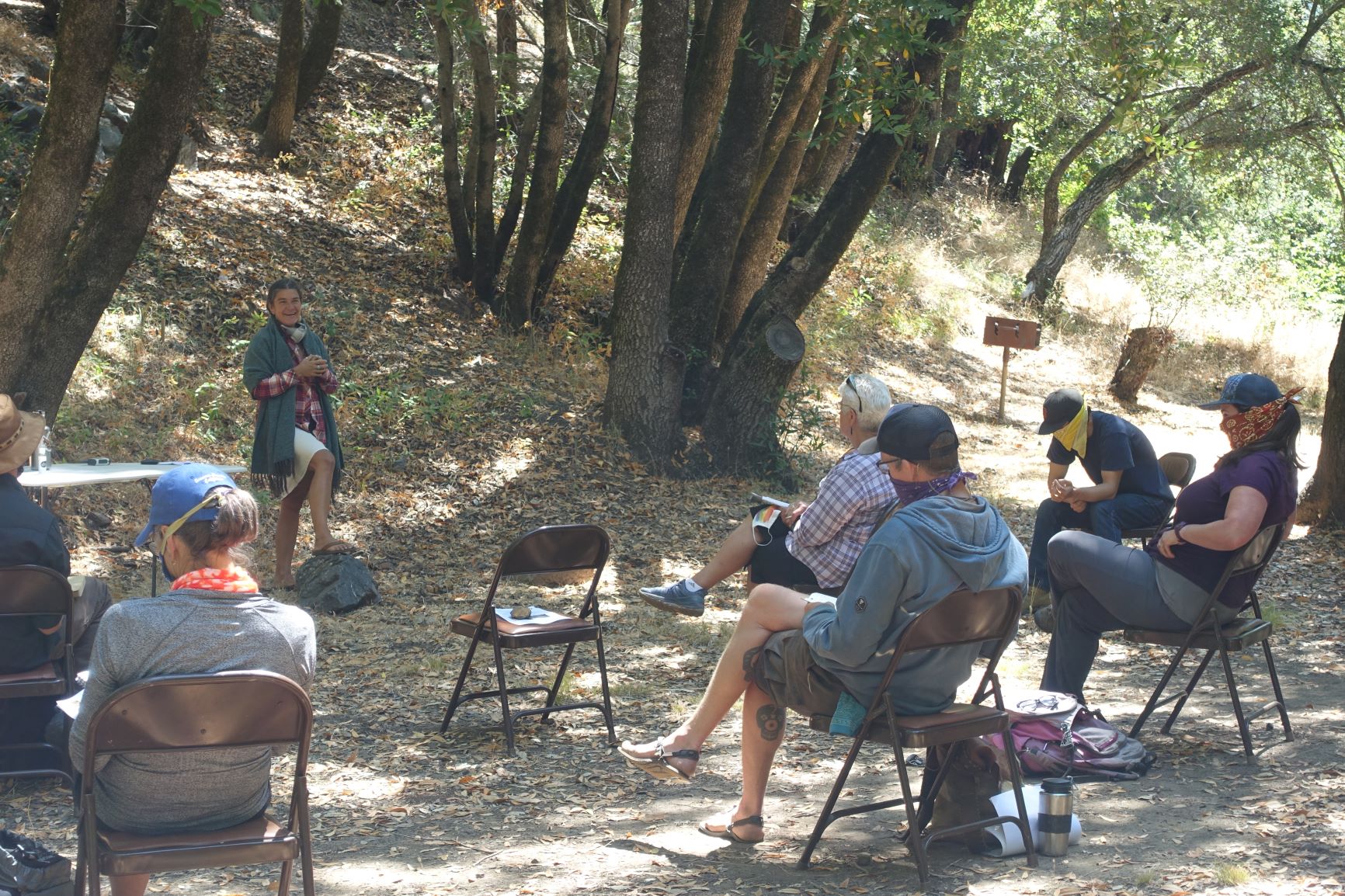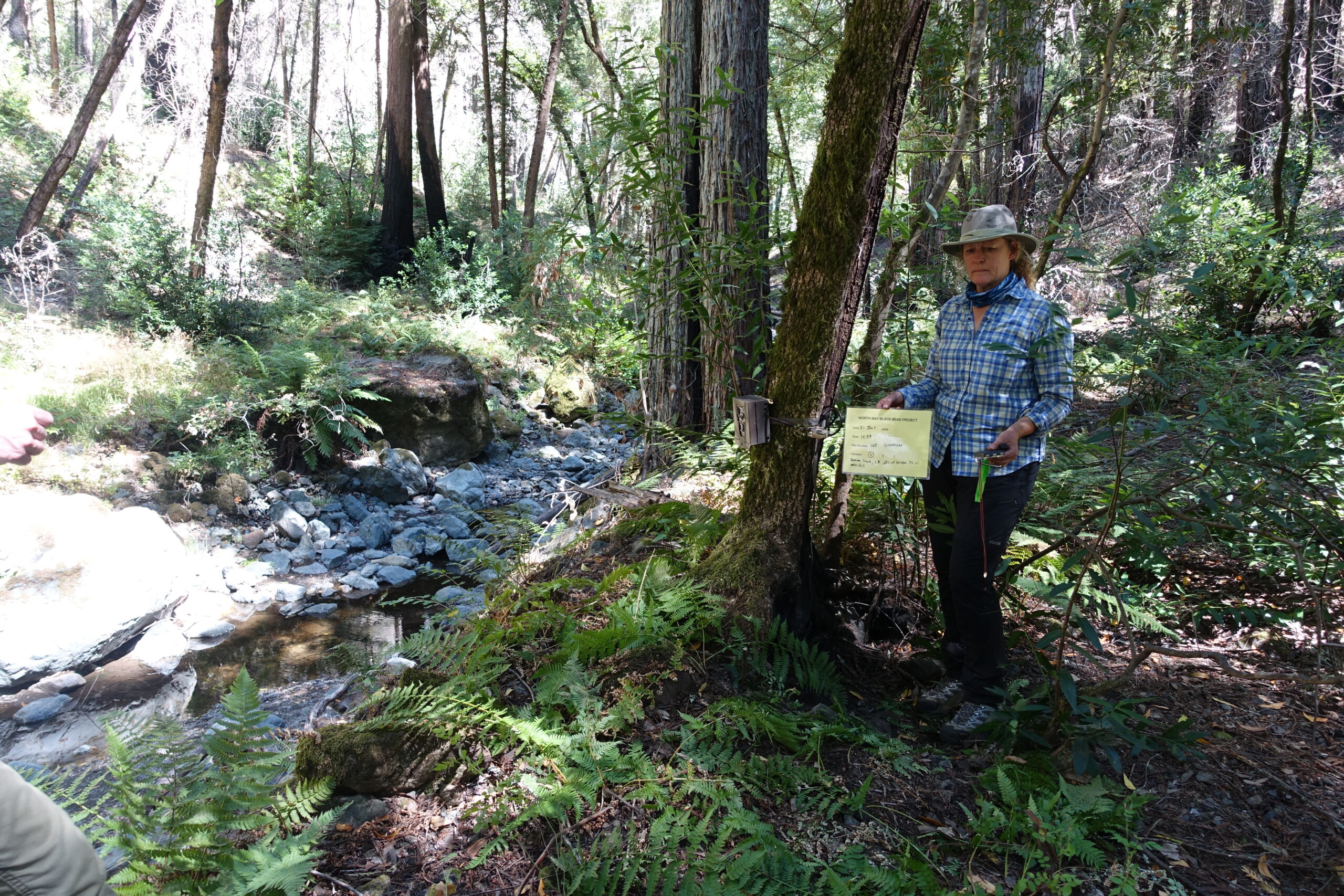
Megan Walla-Murphy, Scientific Lead, training volunteers at Sugarloaf
A recent Sunday in Sonoma County’s Sugarloaf Ridge State Park found socially distanced volunteers looking at photos of bear scat and maps of Sonoma and Napa counties. The North Bay Bear Collaborative, an affiliation of over 10 local non-profits, government agencies, and volunteers, held volunteer training for an upcoming research project designed to determine how many bears live in Sonoma and Napa County, where they migrated from and how they are related.
According to the Scientific Lead on the Project, Meghan Walla-Murphy, “Black bear population and range in Sonoma and Napa counties seem to have increased over the last few years. But how many, where they are and where they are coming from is still a mystery.” The study will send teams of researchers and volunteers to 16 plots of 16 square kilometers each to look for bear scat (feces) and fur. The teams will collect samples and send them to UC Davis for genetic analysis. The study aims to cover the 256 square kilometers over the next few months, finishing when the rains begin.

Stacy Martinelli of CDFW setting up a camera in Sugarloaf Ridge State Park
The training was conducted by Meghan Walla-Murphy and Stacy Martinelli, who is with the California State Fish and Wildlife, the organization funding part of the study. Sonoma Ecology Center Research Project Manager Wendy Hayes and Sugarloaf Park Manager John Roney coordinated the training. Stacy, who designed the study said. “This pilot study combines government, non-profit and most of all, citizen scientists, to increase our knowledge of our local black bear populations in order to keep the bears wild and both bears and humans safe.”
The volunteers come from all over the county and have a variety of backgrounds. Some are current and former students of Meghan’s and many are from the Sugarloaf Park Critter Camera team. Bob Lutolf, a retired computer executive who is the volunteer leader of the 15 person, 24 camera Sugarloaf team, said, “We have been tracking the bears with our cameras for several years now and we are very excited about helping take what we have learned to the next level.”
The North Bay Bear Collaborative is a working group of agencies, non-profit conservation groups, landowners and individuals committed to being proactive liaisons between humans and bears. Our aim is to mitigate future challenges that may arise from our increasing black bear population. Through research, community outreach, and infrastructure improvements, the collaborative seeks to keep our North Bay bears wild and healthy.

Sugarloaf Intern Mario stores a bear scat sample in Ethanol
While the collaborative has some initial funding for this study, it still needs additional support. According to Wendy Hayes, Sonoma Ecology Center researcher, “Please visit our website www.BeingWithBears.org. While there, you can sign up for our further information or to volunteer or donate. We need additional funding for research and outreach. We could not do this important work without a tremendous contribution of volunteer time and community support. It is crucial that we increase our understanding of our local bears and be proactive to reduce potential human-bear conflicts.”
Since the training, the collection and study protocols were field-tested at Sugarloaf Ridge State Park, and the main study will begin in a few weeks. The protocol testing crew collected some promising looking scat and found bear sign at several locations. “It’s amazing to find evidence of bears around here and I find it gratifying learning about scientific collection and study procedures and implement what I am studying in college!” said Mario Coronado Cartmell, a Sonoma Ecology Center/Sugarloaf Intern and junior at Monterey State University, who is assisting on the project.
To learn more about the North Bay Bear Collaborative, or to provide financial support, please visit www.beingwithbears.org. Collaborative Participants include Meghan Walla-Murphy, Sonoma Ecology Center, California Fish and Wildlife, California State Parks, Sonoma County Regional Parks, Kashia Band of Pomo Indians, Pepperwood Preserve, Audubon Canyon Ranch, Sonoma Land Trust and Napa Land Trust.
Recent Comments